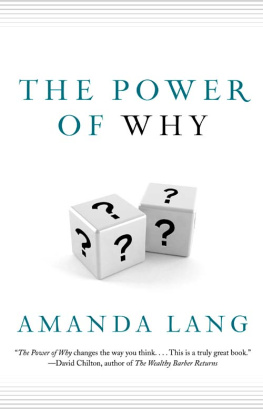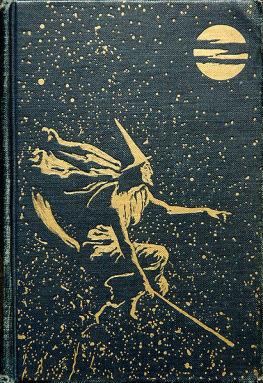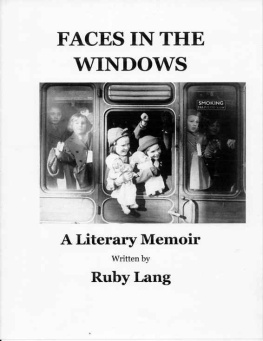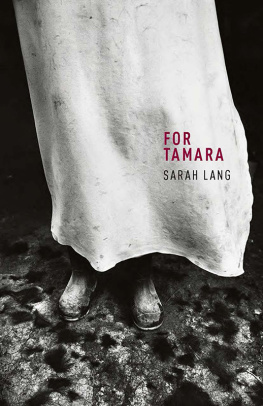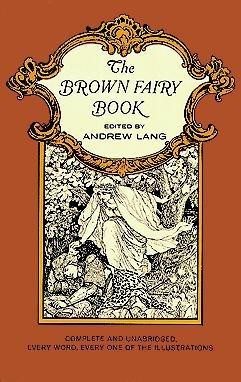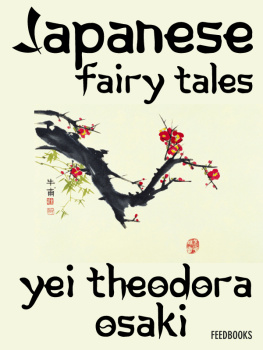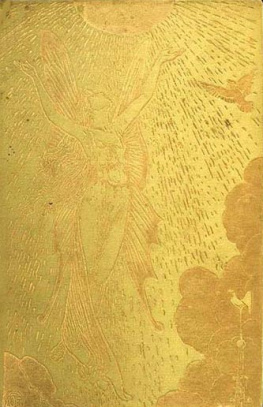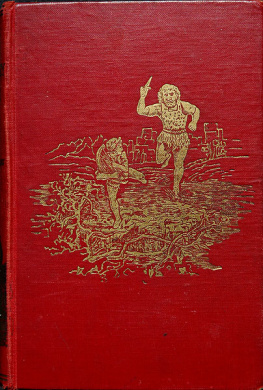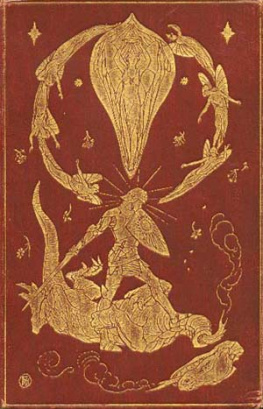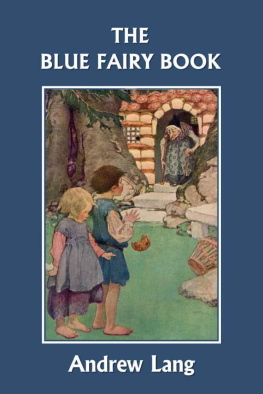Lang - The violet fairy book
Here you can read online Lang - The violet fairy book full text of the book (entire story) in english for free. Download pdf and epub, get meaning, cover and reviews about this ebook. City: Waiheke Island, year: 1901, publisher: Feedbooks;Floating Press, genre: Art. Description of the work, (preface) as well as reviews are available. Best literature library LitArk.com created for fans of good reading and offers a wide selection of genres:
Romance novel
Science fiction
Adventure
Detective
Science
History
Home and family
Prose
Art
Politics
Computer
Non-fiction
Religion
Business
Children
Humor
Choose a favorite category and find really read worthwhile books. Enjoy immersion in the world of imagination, feel the emotions of the characters or learn something new for yourself, make an fascinating discovery.
The violet fairy book: summary, description and annotation
We offer to read an annotation, description, summary or preface (depends on what the author of the book "The violet fairy book" wrote himself). If you haven't found the necessary information about the book — write in the comments, we will try to find it.
The violet fairy book — read online for free the complete book (whole text) full work
Below is the text of the book, divided by pages. System saving the place of the last page read, allows you to conveniently read the book "The violet fairy book" online for free, without having to search again every time where you left off. Put a bookmark, and you can go to the page where you finished reading at any time.
Font size:
Interval:
Bookmark:


Published: 1901
Categorie(s): Fiction, Fantasy, Fairy Tales, Folk Tales& Mythology, Short Stories, Juvenile & Young Adult
Source: http://www.gutenberg.org/etext/641
Andrew Lang (March 31, 1844, Selkirk July 20, 1912, Banchory,Kincardineshire) was a prolific Scots man of letters. He was apoet, novelist, and literary critic, and contributor toanthropology. He now is best known as the collector of folk andfairy tales. The Andrew Lang lectures at St Andrews University arenamed for him. Source: Wikipedia
- TheArabian Nights (1898)
- TheBlue Fairy Book (1889)
- TheRed Fairy Book (1890)
- TheGrey Fairy Book (1900)
- TheCrimson Fairy Book (1903)
- TheYellow Fairy Book (1894)
- Helen ofTroy (1882)
- TheOrange Fairy Book (1906)
http://www.feedbooks.com
Strictly for personal use, do not use this file for commercialpurposes.
The Editor takes this opportunity to repeat what he has oftensaid before, that he is not the author of the stories in the FairyBooks; that he did not invent them 'out of his own head.' He isaccustomed to being asked, by ladies, 'Have you written anythingelse except the Fairy Books?' He is then obliged to explain that hehas NOT written the Fairy Books, but, save these, has writtenalmost everything else, except hymns, sermons, and dramaticworks.
The stories in this Violet Fairy Book, as in all the others ofthe series, have been translated out of the popular traditionaltales in a number of different languages. These stories are as oldas anything that men have invented. They are narrated by nakedsavage women to naked savage children. They have been inherited byour earliest civilised ancestors, who really believed that beastsand trees and stones can talk if they choose, and behave kindly orunkindly. The stories are full of the oldest ideas of ages whenscience did not exist, and magic took the place of science. Anybodywho has the curiosity to read the 'Legendary Australian Tales,'which Mrs. Langloh Parker has collected from the lips of theAustralian savages, will find that these tales are closely akin toour own. Who were the first authors of them nobody knowsprobablythe first men and women. Eve may have told these tales to amuseCain and Abel. As people grew more civilised and had kings andqueens, princes and princesses, these exalted persons generallywere chosen as heroes and heroines. But originally the characterswere just 'a man,' and 'a woman,' and 'a boy,' and 'a girl,' withcrowds of beasts, birds, and fishes, all behaving like humanbeings. When the nobles and other people became rich and educated,they forgot the old stories, but the country people did not, andhanded them down, with changes at pleasure, from generation togeneration. Then learned men collected and printed the countrypeople's stories, and these we have translated, to amuse children.Their tastes remain like the tastes of their naked ancestors,thousands of years ago, and they seem to like fairy tales betterthan history, poetry, geography, or arithmetic, just as grown-uppeople like novels better than anything else.
This is the whole truth of the matter. I have said so before,and I say so again. But nothing will prevent children from thinkingthat I invented the stories, or some ladies from being of the sameopinion. But who really invented the stories nobody knows; it isall so long ago, long before reading and writing were invented. Thefirst of the stories actually written down, were written inEgyptian hieroglyphs, or on Babylonian cakes of clay, three or fourthousand years before our time.
Of the stories in this book, Miss Blackley translated 'DwarfLong Nose,' 'The Wonderful Beggars,' 'The Lute Player,' 'Two in aSack,' and 'The Fish that swam in the Air.' Mr. W. A. Craigietranslated from the Scandinavian, 'Jasper who herded the Hares.'Mrs. Lang did the rest.
Some of the most interesting are from the Roumanion, and threewere previously published in the late Dr. Steere's 'Swahili Tales.'By the permission of his representatives these three Africanstories have here been abridged and simplified for children.
Long, long ago there stood in the midst of a country coveredwith lakes a vast stretch of moorland called the Tontlawald, onwhich no man ever dared set foot. From time to time a few boldspirits had been drawn by curiosity to its borders, and on theirreturn had reported that they had caught a glimpse of a ruinedhouse in a grove of thick trees, and round about it were a crowd ofbeings resembling men, swarming over the grass like bees. The menwere as dirty and ragged as gipsies, and there were besides aquantity of old women and half-naked children.
One night a peasant who was returning home from a feast wandereda little farther into the Tontlawald, and came back with the samestory. A countless number of women and children were gathered rounda huge fire, and some were seated on the ground, while othersdanced strange dances on the smooth grass. One old crone had abroad iron ladle in her hand, with which every now and then shestirred the fire, but the moment she touched the glowing ashes thechildren rushed away, shrieking like night owls, and it was a longwhile before they ventured to steal back. And besides all thisthere had once or twice been seen a little old man with a longbeard creeping out of the forest, carrying a sack bigger thanhimself. The women and children ran by his side, weeping and tryingto drag the sack from off his back, but he shook them off, and wenton his way. There was also a tale of a magnificent black cat aslarge as a foal, but men could not believe all the wonders told bythe peasant, and it was difficult to make out what was true andwhat was false in his story. However, the fact remained thatstrange things did happen there, and the King of Sweden, to whomthis part of the country belonged, more than once gave orders tocut down the haunted wood, but there was no one with courage enoughto obey his commands. At length one man, bolder than the rest,struck his axe into a tree, but his blow was followed by a streamof blood and shrieks as of a human creature in pain. The terrifiedwoodcutter fled as fast as his legs would carry him, and after thatneither orders nor threats would drive anybody to the enchantedmoor.
A few miles from the Tontlawald was a large village, where dwelta peasant who had recently married a young wife. As not uncommonlyhappens in such cases, she turned the whole house upside down, andthe two quarrelled and fought all day long.
By his first wife the peasant had a daughter called Elsa, a goodquiet girl, who only wanted to live in peace, but this herstepmother would not allow. She beat and cuffed the poor child frommorning till night, but as the stepmother had the whip-hand of herhusband there was no remedy.
For two years Elsa suffered all this ill-treatment, when one dayshe went out with the other village children to pluck strawberries.Carelessly they wandered on, till at last they reached the edge ofthe Tontlawald, where the finest strawberries grew, making thegrass red with their colour. The children flung themselves down onthe ground, and, after eating as many as they wanted, began to pileup their baskets, when suddenly a cry arose from one of the olderboys:
Font size:
Interval:
Bookmark:
Similar books «The violet fairy book»
Look at similar books to The violet fairy book. We have selected literature similar in name and meaning in the hope of providing readers with more options to find new, interesting, not yet read works.
Discussion, reviews of the book The violet fairy book and just readers' own opinions. Leave your comments, write what you think about the work, its meaning or the main characters. Specify what exactly you liked and what you didn't like, and why you think so.


